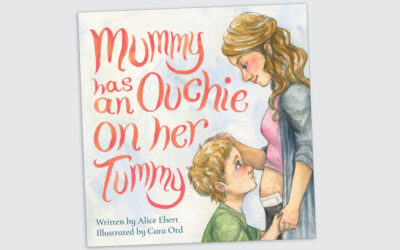By Jessica Sanders
When I was on tour promoting my first book, Love Your Body, the two most common questions I was asked were, ‘Why didn’t you include boys’ and ‘Will you be writing a book for boys?’
I can very happily tell you that I have written that book for boys but it looks a little different to Love Your Body. Love Your Body was written to combat a toxic idea that girls are fed from an early age. The idea that their bodies and how they look are the most important thing about them. Love Your Body encouraged girls to take up more space and to reject the notion of perfection.
Be Your Own Man
Be Your Own Man is a different book because body image issues are different between the genders. For example, a girl is told that she must be thin, have flawless skin, symmetrical features, plump lips, to take up less space, etc, etc. This is not the same message that our boys receive. Boys are taught that they should be strong and toned, big and broad, tall, sporty and increasingly that they must also be well-groomed and fashionable. Boys are taught the literal opposite of what girls are taught, that they should take up more space, be dominant in their physicality. Why? Because our society has for a long time believed that our bodies should reflect the gender stereotype we are ascribed at birth. If we are to ever truly address the issue of body image effectively, we have to address limiting gender stereotypes at the same time.
In my new book, Be Your Own Man, I encourage boys to break free of the rigid male stereotype and create a new identity that feels right to them. I have included characters who have a range of body types, abilities, cultural backgrounds and interests because ‘boys cannot be what they cannot see’ and representation is key in promoting positive body image. Throughout the book, boys are encouraged to embrace their vulnerability and put their hand up for help to counteract the messaging that boys receive such as ‘boys don’t cry’ and that they should just ‘man up’.
Recently we have started to publicly challenge this outdated stereotype of masculinity in the media. Terms like ‘toxic masculinity’ are referenced consistently, however, we don’t often discuss the alternatives. For example, what is the opposite of toxic masculinity; is there such a thing as positive masculinity? I fear this has resulted in boys and men who are now confused about their identity. Their old understanding of ‘maleness’ is under critique, and they are not being provided with resources or role models to support them in establishing a new identity that is healthy and free from toxicity.
What can parents do?
As a parent, you are probably asking yourself what you can do to support your son to feel comfortable in his body and with himself? The primary thing you need to do is to challenge this stereotype by showing your son different ways of being a boy and a man.
Role modelling is possibly the most important part of raising a child who feels free to be themselves. For example, if a child never sees their dad or another man cry, they will grow to believe that this is something men just don’t do. If a boy’s primary role models are sporting stars, then he will be comparing himself to an unrealistic body type.
Wherever you can, seek out diverse representations of maleness. You could find diverse male role models within the community, in books, on television or on YouTube. By providing diverse role models, you are providing a young person with choice; they get to pick and choose parts of identities and behaviours that feel good to them.
For a young person who is growing into themselves, there is no greater gift than choice.
Jessica Sanders is a social worker, award-winning and best-selling author of Love Your Body. Her latest book, Be Your Own Man can be found at all good bookstores or online through Booktopia.

RELATED:
Parenting a highly sensitive child
The new book designed to help kids who worry


